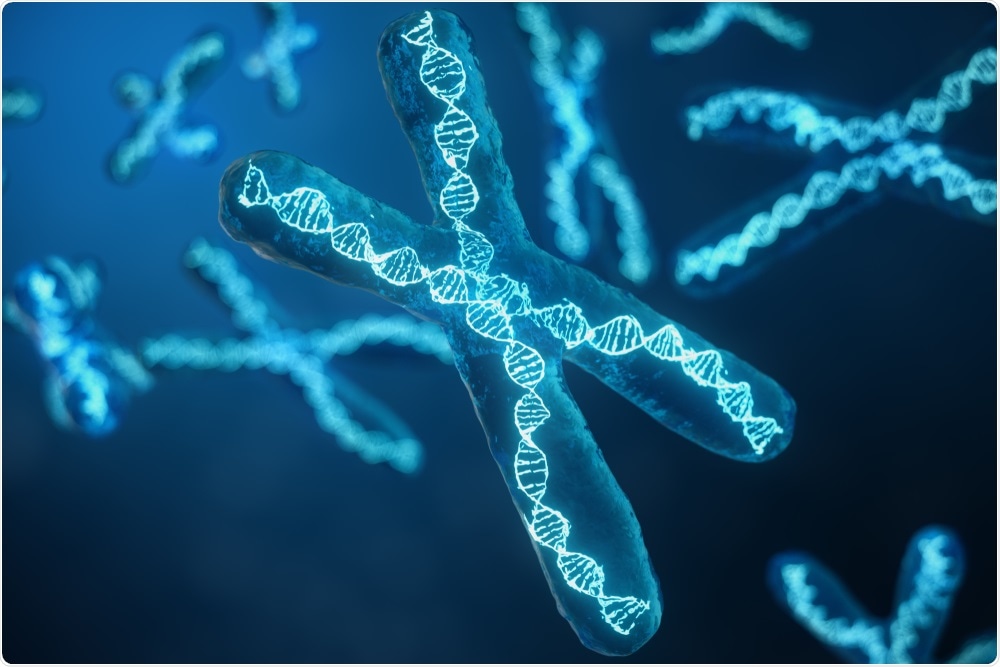A team of scientists from Beijing and Taipei have shed light on how cancer cell populations avoid genetic meltdown, despite the rapid accumulation of harmful mutations.
 Ustyna Shevchuk | Shutterstock
Ustyna Shevchuk | Shutterstock
The team explored cancer vulnerability from a mutational perspective to help them understand how cancer cells could be further targeted with breakthrough drugs.
For the study, Xuemei Lu and colleagues probed the most well-known cultured cancer cells – HeLa cells – as a model for investigating underlying evolutionary forces:
We examined variation in growth rate among individual HeLa cells by monitoring clones from a common ancestral HeLa cell population.”
Xuemei Lu, Lead Author
Using the ancestral cells, the team established a HeLa cell line called E6. Once the E6 population size reached around 5 x 104 cells (approximately 15 to 16 cell divisions), the team generated five single-cell clones that they established in culture.
They then used DNA sequencing to catalog mutations in the clones, focusing on copy number variation (CNV) rather than single-nucleotide mutations, which would have arisen too slowly to generate significant sequence variation, given the short duration of the experiments.
"We then estimated the deleterious mutation rate and the average fitness decrease per mutation by performing computer simulations of cell growth," explains study author Hurng-Yi Wang.
As reported by Oxford University Press, the team found that the main mutations affected the copy number of genes. An average of 0.29 deleterious mutations arose with each cell division, with each deleterious event reducing cell fitness by 18%.
This finding shows just how quickly cell growth heterogeneity can be generated in cancer cells. The results indicated that HeLa cells undergo a 5% reduction in fitness for every generation.
For human cells to be able to generate deleterious mutations in the form of CNVs at such a high rate and intensity, a genetic meltdown may be plausible, suggests the team.
For instance, 23% of cells isolated from a fast growing-clone called B8 and 50% of cells isolated from a slow-growing clone called E3, died out within seven days. Overall, only 60% of B8 and 27% of E3 cells survived longer than two months.
Next, the team counted the chromosomal number in around 20 cells picked from each of the single-cell-originated clones from B8.
Chromosomal number varied significantly from the usual 46 found in human cells and instead ranged from 38 up to 113. Therefore, despite the progeny’s single-cell origin, it developed an abnormal chromosomal number within just 20 to 30 cell divisions.
Wang and team, therefore, asked how HeLa cancer cell lines manage to survive despite such a high mutation rate, reduced growth rate, and abnormal chromosomal number.
High deleterious mutation rate would raise an impression that the HeLa cell lines may have gone extinct long ago."
Xuemei Lu, Lead Author
The team’s simulations suggested that despite most of the cells accumulating deletions and being worse off than ancestral cells, 13.1% were still mutation-free.
"These mutation-free cells can avoid the population from extinction," says Lu. This also explains why chemotherapy that destroys 90% of a cancer cell population may still not be effective enough.
In the future, the researchers hope to use the findings to explore how breakthroughs recently made with checkpoint inhibitor drugs could be used to target cancer cell vulnerability.